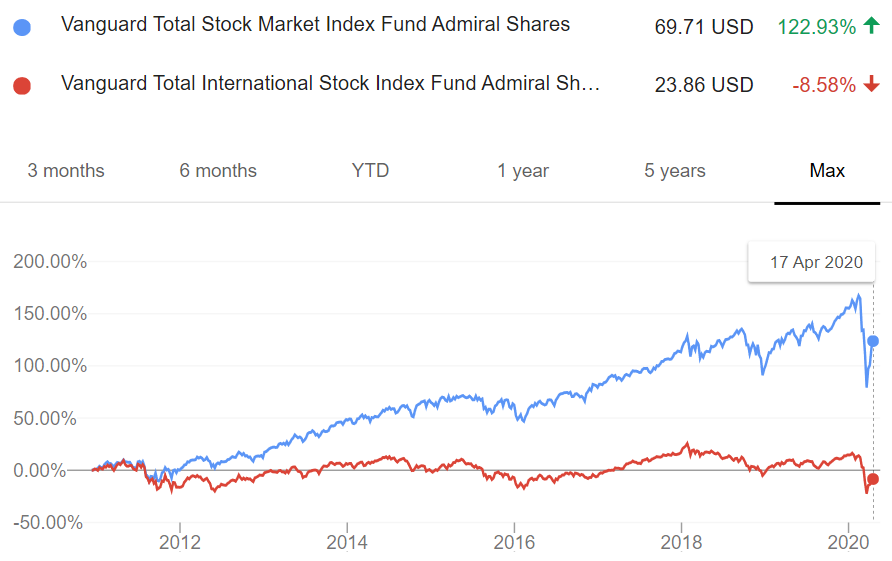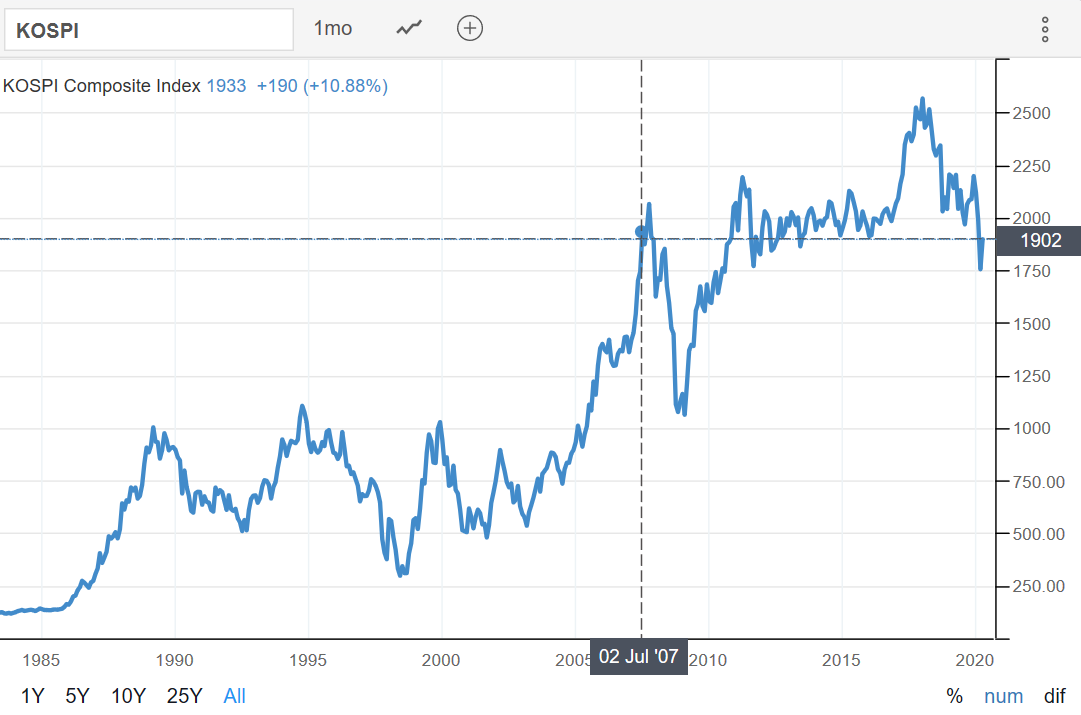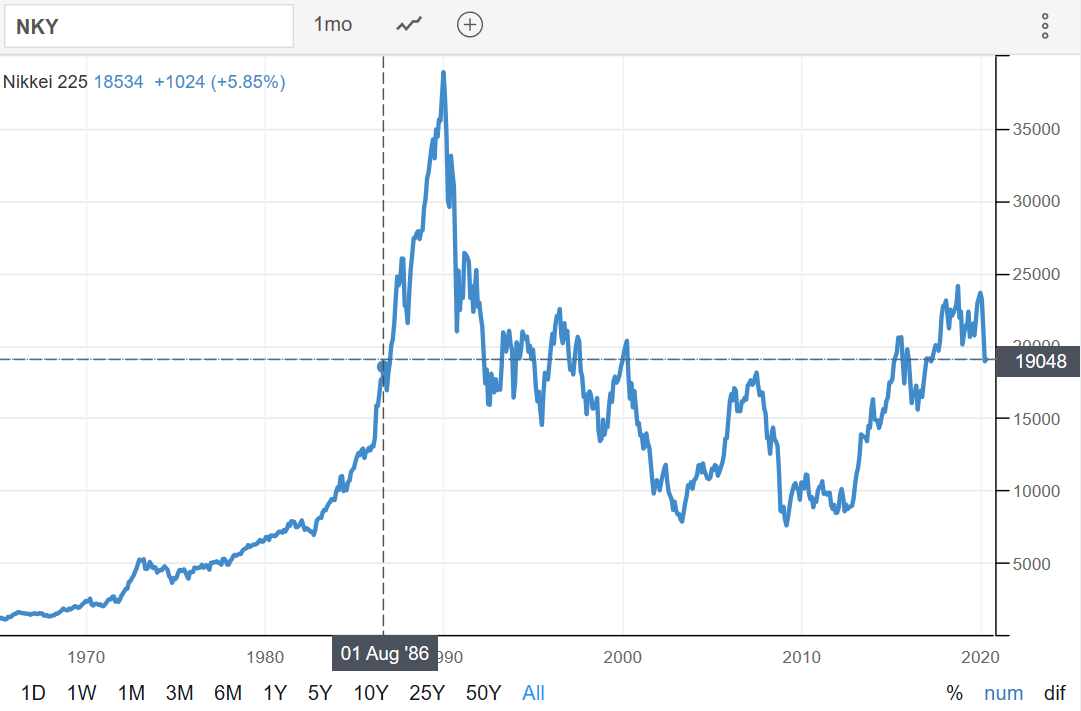Among ETFs, leveraged and inverse products (L&I) have always been the black sheep.
ETFs are conservative and defensive: they are highly diversified and give investors the average return a market offers. They are also cheap and offer transparency of a kind you can’t get elsewhere.
L&I funds are none of these things, of course. They are much more a casino product. Going in on a 3x leveraged oil ETP as oil goes sub-zero; buying a 2x inverse VIX ETN as the market craters -- it sounds like a roulette table for the Wall St Bets crowd.
And like a casino, the longer you stay at the table, the more likely the house wins.
But there are two sides to every story. My colleague Tom Eckett has done a good job highlighting the dangers involved. Below I am looking at the other.
Outside the USA, stocks do not go up
The biggest champions of index investing – like Warren Buffet and Jack Bogle – tend to be American. This is no coincidence, in my view. In America, stocks actually go up. And buying and holding an index fund works really well. Outside of America – not so much.
Comparing Vanguard’s two Admiral funds – the US one, with the global ex-US one – makes the point quite nicely. As the chart below shows – the US index has done really well.

Source: Google Finance
Sure, this is a simplifying exercise. There are currency moves in there. Going overseas is less tax efficient. I’ve ignored dividends, etc. But the point remains: buy and hold index investing works best in the US.
Index funds have gone nowhere in 21 years without dividends
What does this have to do with L&I?
Well, put yourself in the shoes of a Japanese or Korean retail investor (L&I are really popular there). These are the indexes you’re looking at when the high priests of index investing make their entrance.

Source: Trading Economics
If you are Korean, you’re looking at the Kospi. You see an index full of chaebols that has gone nowhere since July 2007 – almost 13 years. You feel that stocks do not go up.

Source: Trading Economics
If you are a 33-year-old Japanese, you are looking at an index that has gone nowhere your entire life. You really feel that stocks do not go up.
This is where L&I comes in: when your country’s stock market goes nowhere, the temptation to take a punt is a lot stronger. This is because the opportunity cost is a lot lower.
The alternatives are worse
The other note that can be struck in favour of L&I is that other derivatives are far worse. With L&I, you can lose all your money and very quickly. Recent explosions of 3x oil ETPs prove this point nicely. No-one wants this.
But with other products you can lose more money than you have. This, self-evidently, is far worse.
Contracts for difference, spread betting, margin trading: all are leveraged bets much like L&I ETPs. But here the leverage is external and the investors wear losses beyond principal. At least with L&I ETPs the leverage is internal, and investors can only lose the money they fronted.
It’s for this reason that some managed accounts (in Australia, at least, which I know best)* do in fact use L&I funds. They can be useful for hedging and they get around mandates excluding derivatives.
It's also worth noting that on the European continent, structured products and certificates are common and have always had leverage embedded.
Other companies are also volatile, can go to zero
The final point is on volatility. We allow a wide margin for speculative companies with highly volatile share prices.
Most tiny biotech companies – as everyone knows – will fail. Their chances of producing a knockout drug are so small that the raw statistics – the tiny likelihood of success – suggest you should avoid them.
The same thing is true of L&I. The numbers – the compounding of the daily reset function – are against them. The dice are loaded in favour of failure. But for investors with the risk appetite, who understand the products, why not allow them to access the exposure?
--------------------------
*Australia allows leveraged ("geared") and inverse funds, but not those with a daily reset function as in the US.
Sign up to ETF Stream’s weekly email here


